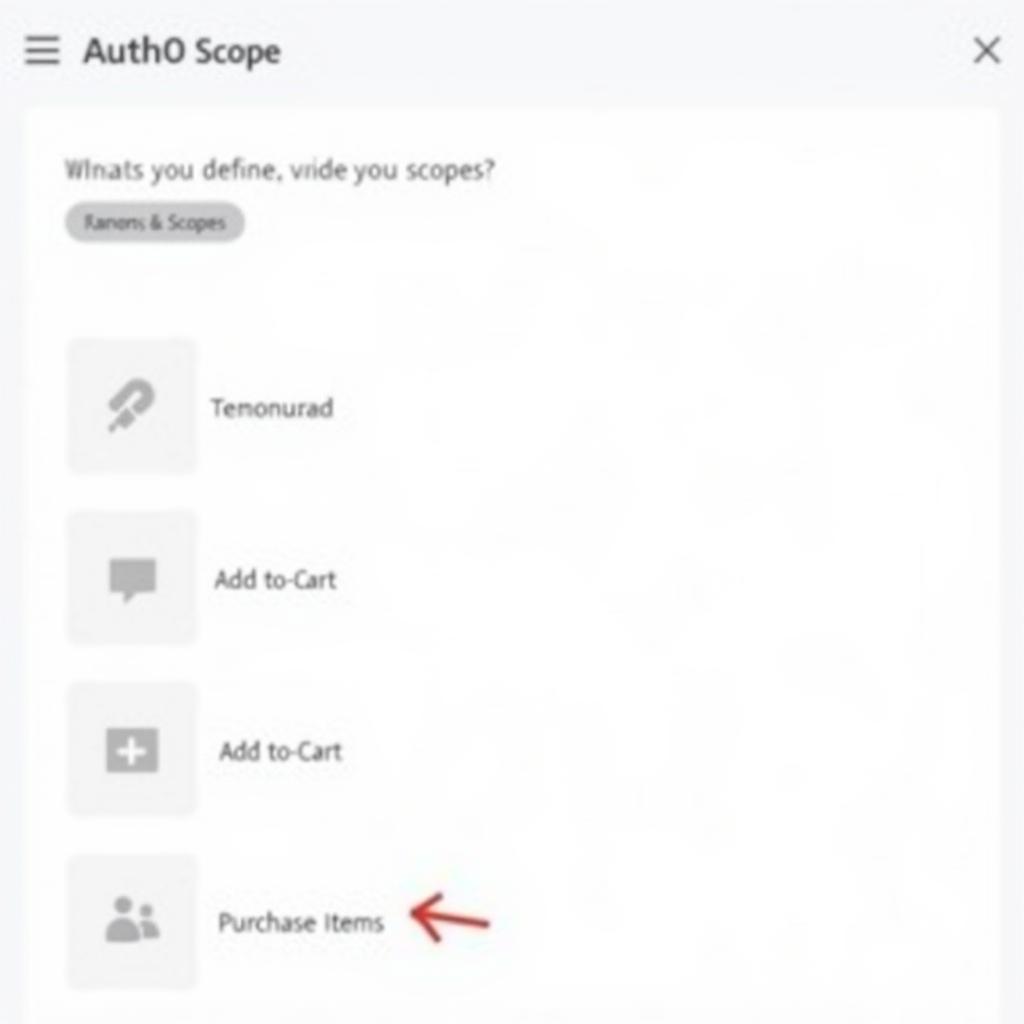Auth0 is a powerful identity platform that simplifies user authentication and authorization for various applications, including single-page applications (SPAs). Understanding and properly configuring Auth0 Spa Scopes is crucial for securing your application and granting users the correct level of access to your resources. This article dives deep into the intricacies of Auth0 SPA scopes, exploring best practices and common scenarios to help you implement robust and secure authentication in your SPA.
What are Auth0 SPA Scopes?
Scopes in Auth0 define the permissions a user grants to your application when they log in. They act as granular access control mechanisms, allowing you to specify which resources and actions a user can access. Think of them as permissions that your application requests from the user. For example, a scope like read:profile would allow your application to read the user’s profile information, while write:posts would grant permission to create new posts. Properly defining and using scopes is essential for protecting sensitive data and ensuring your application’s security.
Defining Scopes in Your Auth0 Application
In your Auth0 dashboard, you can define custom scopes tailored to your application’s specific needs. These scopes can represent any action or resource within your application. It’s important to design your scopes with a clear understanding of your application’s functionality and data access requirements. For instance, an e-commerce application might have scopes like read:products, add:to:cart, and purchase:items. Clear and well-defined scopes provide a granular control mechanism for access management, enhancing both security and user experience.
 Defining Scopes in Auth0
Defining Scopes in Auth0
Requesting Scopes in Your SPA
When a user logs in to your SPA, you need to specify the scopes you are requesting. This is typically done during the authentication flow using the Auth0 SDK. By requesting specific scopes, you’re essentially asking the user for permission to perform certain actions or access certain data on their behalf. Without requesting the necessary scopes, your application won’t be able to perform those actions, even if the user has granted them in the past.
Best Practices for Using Auth0 SPA Scopes
Using Auth0 SPA scopes effectively requires careful planning and adherence to best practices. Here are some key considerations:
- Principle of Least Privilege: Only request the minimum necessary scopes. This limits your application’s access to user data and minimizes potential security risks.
- Granular Scope Design: Create specific and granular scopes rather than broad, all-encompassing ones. This provides finer control over access and allows for more flexible permission management.
- Documentation: Maintain clear documentation of your scopes and their corresponding permissions. This helps developers understand how to use them correctly and ensures consistency across your application.
- Regular Review: Periodically review your defined scopes to ensure they are still relevant and appropriate for your application’s needs.
 Best Practices for Auth0 SPA Scopes
Best Practices for Auth0 SPA Scopes
Common Scenarios and Examples
Let’s consider a few common scenarios to illustrate the use of Auth0 SPA scopes:
- Social Media Integration: When integrating with social media platforms, you might request scopes like
read:profileto access the user’s profile information andpost:statusto allow posting on their behalf. - E-commerce Applications: Scopes like
view:orders,update:shipping_address, andmake:paymentwould allow users to manage their orders, update their shipping information, and complete purchases.
“Properly managing scopes is paramount for ensuring data security and user privacy,” says John Smith, Senior Security Architect at CyberSecure Solutions. “By adhering to the principle of least privilege and implementing granular scope design, developers can significantly mitigate potential security risks.”
Dealing with Scope Changes
As your application evolves, you might need to add or modify scopes. It’s crucial to handle these changes carefully to avoid breaking existing integrations or disrupting user workflows. Communicate any scope changes clearly to your users and provide adequate documentation to help them understand the impact of these changes. “Transparency and clear communication are vital when making changes to scopes,” adds Jane Doe, Lead Developer at AppDev Masters. “Users should be informed about what data is being accessed and why.”
 Managing Scope Changes in Auth0
Managing Scope Changes in Auth0
Conclusion
Auth0 SPA scopes provide a robust mechanism for controlling access to your application’s resources. By understanding and properly implementing these scopes, you can ensure the security of your application and protect user data. Remember to follow best practices, document your scopes thoroughly, and communicate any changes clearly to your users. Properly managing Auth0 SPA scopes is essential for building secure and reliable SPAs.
FAQ
- What is the difference between Auth0 scopes and roles?
- How do I revoke a user’s access to specific scopes?
- Can I use custom scopes with Auth0’s built-in rules?
- What are the security implications of using overly broad scopes?
- How can I test my application with different scope combinations?
- What is the best way to manage scopes in a large-scale application?
- How can I handle scope changes without disrupting existing users?
Need assistance with your Auth0 implementation? Contact us! Phone: 0373298888, Email: [email protected] or visit our office at 86 Cau Giay, Hanoi. We have a 24/7 customer support team ready to assist you.